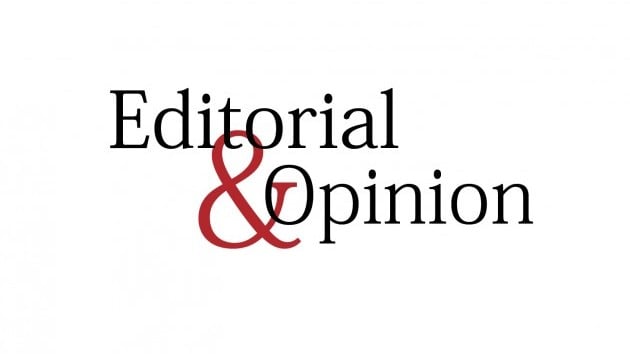
Sovereign wealth funds (SWFs) have experienced a remarkable evolution, expanding from a mere 62 entities in 2000 to a staggering 176 by 2023. This growth can be attributed to a convergence of factors, including a relentless surge in oil prices, the unwavering march of financial globalisation and persistent global economic disparities.
For resource-rich nations, especially those in the Gulf region, SWFs have emerged as invaluable instruments, adept at serving diverse strategic objectives. In January 2023, amid global recession concerns, the International Monetary Fund (IMF) disclosed that Middle East oil and gas producers were on track to amass an extraordinary $1.3 trillion in additional revenues over the next four years. This surge was primarily driven by the turmoil surrounding Russia’s conflict in Ukraine, highlighting the indispensable role of SWFs in shaping the economic strategies of these resource-rich nations.
The Gulf countries collectively oversee approximately 20 SWFs, each with distinct attributes such as assets under management, investment strategies, diversification approaches, mandates, objectives and governance structures. However, a common thread unites them: surplus revenue generated predominantly from commodity exports, particularly oil and gas. These funds operate under vigilant government or ruling family oversight.
Presently, Gulf SWFs collectively manage approximately $3.7 trillion. The seven largest funds, including behemoths like ADIA, ADQ, Mubadala, PIF and QIA, wield substantial influence, accounting for nearly 40% of the world’s SWF assets. Jihad Azour, the IMF’s director for the Middle East and North Africa, has ventured that Gulf producers could potentially accumulate an additional $1.3 trillion in revenue by 2026.
In the realm of political economics, SWFs have become subjects of intense scrutiny. Among others, Andrew Rozanov’s research underscores that SWFs transcend their economic roles to become influential actors that shape the global financial landscape, with far-reaching implications for economies worldwide while Kristian Coates Ulrichsen highlights the pivotal role of SWFs in diversification efforts, enabling countries to reduce their dependence on oil revenues and promote economic sustainability.
Recent investments by Gulf SWFs reflect notable shifts in patterns and priorities. These trends encompass a pivot toward alternative assets, strategic investments in “industries of the future”, increased allocations to domestic investments, a growing interest in global startups and closer collaboration with private equity and venture capital firms. Geographically, these funds are broadening their horizons, forging economic partnerships beyond their borders. An increasing number of these strategic funds are positioned to attract foreign investments while simultaneously nurturing domestic economic growth. Gulf SWFs are celebrated for their flexibility, adeptly navigating both domestic and foreign investment landscapes.
Significant pools of Middle Eastern capital remain untapped. In Saudi Arabia, the $620 billion Public Investment Fund faces immense pressure to deploy capital as Crown Prince Mohammed bin Salman accelerates efforts to reduce the kingdom’s reliance on crude oil. In Doha, the $450 billion Qatar Investment Authority actively seeks overseas opportunities, especially after hosting the FIFA World Cup last year.
Although North American and European assets still feature prominently in Gulf SWF portfolios, these investors are actively diversifying their global investments. This includes forming economic partnerships with neighbouring nations, even in historically adversarial relationships, as seen with Egypt, Iraq and Turkiye. Gulf sovereign investors are also increasingly interested in Chinese assets, marking a shift from a traditional trade partnership to a deeper investment relationship. Additionally, there is a noticeable shift towards redirecting their investment focus to South Asia.
The current phase of Gulf SWF activities is characterised by an ambitious agenda of expanding global influence and assuming more substantial responsibilities. These funds have evolved from being merely financial actors to becoming instrumental in job creation, economic stimulation, contributions to decarbonisation objectives, and more.
While challenges persist, including a historical record of underperforming investments and the looming specter of mounting protectionism that could restrict inward investment, these sovereign funds have transformed into astute and adaptable investors, displaying remarkable adeptness in navigating the intricate contours of the global financial landscape.
Published in The Express Tribune, October 2nd, 2023.
Like Opinion & Editorial on Facebook, follow @ETOpEd on Twitter to receive all updates on all our daily pieces.

1731907834-0/Jonathan-Majors-and-Meagan-Good-(2)1731907834-0-405x300.webp)
1731906859-0/Jonathan-Majors-and-Meagan-Good-(1)1731906859-0-165x106.webp)

1724657897-0/Untitled-design-(2)1724657897-0-165x106.webp)








COMMENTS
Comments are moderated and generally will be posted if they are on-topic and not abusive.
For more information, please see our Comments FAQ